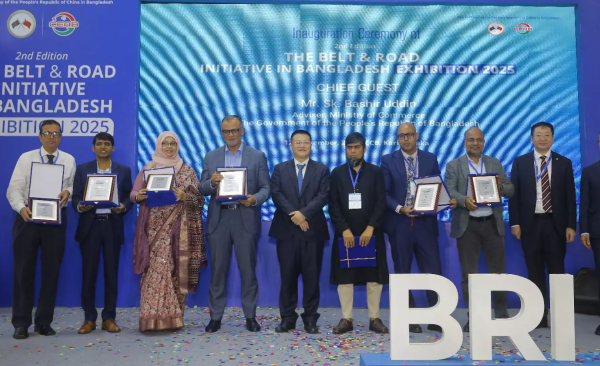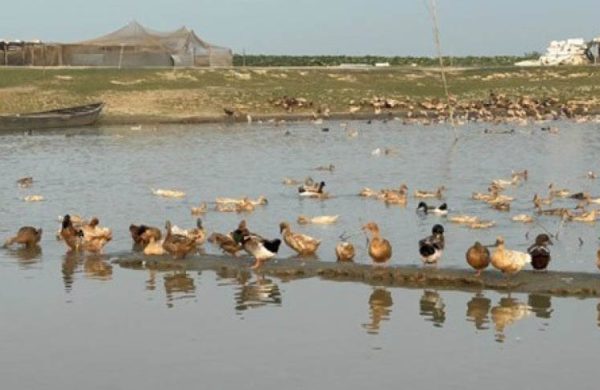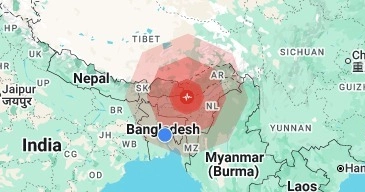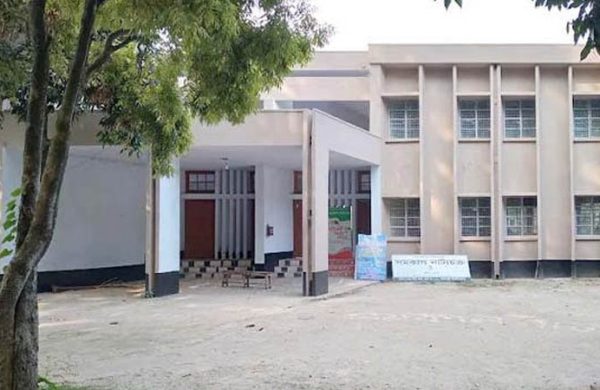Untapped goldmine: Why local SMEs deserve bigger push in global trade
- Update Time : Sunday, April 27, 2025
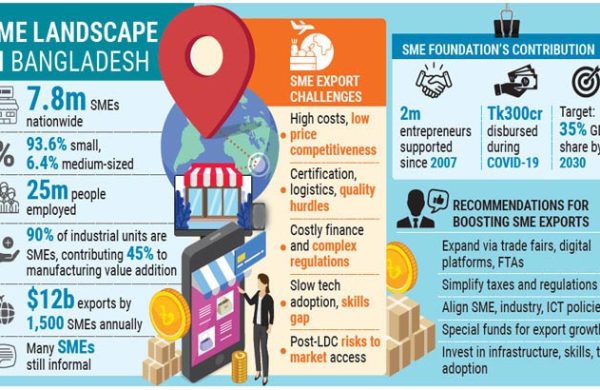
TDS Desk:
From humble beginnings in rural Jashore to international markets in China, the Philippines, and Cambodia, Abul Kalam Azad has transformed a simple agricultural by-product into a thriving export business. As Managing Director of Panacea Carbon Limited, Azad has been exporting jute-stick charcoal powder since 2016, earning an average of Tk12 crore annually from this fully value-added product.
Azad’s success story is not unique. A dozen other Small and Medium-sized Enterprises (SMEs) are also exporting the innovative product to countries including Thailand and Taiwan, collectively earning around Tk170 crore each year despite facing considerable challenges.
Stories like Azad’s offer a glimpse into the enormous, yet largely untapped, export potential of Bangladeshi SMEs.
Globally, the market for SME goods and services is valued at over $6 trillion annually, and countries like Vietnam, Thailand, and Malaysia have already carved out significant shares, with SMEs contributing 40%-50% of their total exports.
In contrast, SMEs in Bangladesh currently account for only about 25% of export earnings – despite making up over 99% of the country’s industrial enterprises and employing more than 25 million people.
Experts believe this share could easily double with the right support and targeted investments.
There Is No Shortage Of Opportunity
Products like agro-processed foods, handicrafts, jute and bamboo goods, leather items, ceramics, light engineering products, frozen snacks, and even niche innovations like Azad’s jute charcoal have strong demand across Asia, Europe, and North America.
But to truly seize the moment, Bangladesh’s SMEs must overcome persistent barriers in certification, financing, market access, and product innovation.
AZAD’S JOURNEY CAPTURES BOTH THE PROMISE AND THE CHALLENGES
“I graduated in economics from Dhaka University, then set up a rice mill and started in agro-processing,” Azad shared with “Later, I took a leap into charcoal production and built my factory in Jashore in 2016.”
Panacea Carbon Limited employs 110 people – far from the handful he started with.
“My total investment now stands at Tk1.5 crore,” he said proudly. “It’s all been built through hard work. If this industry takes off, it’ll also be a big win for our jute farmers, since everything we need is locally sourced. I believe the sector could grow by up to 40% over the next five years.”
Still, it’s not without obstacles. Azad pointed to a long list of hurdles – including shipping bottlenecks, lack of certification facilities, limited testing labs, and weak research and policy support – that are holding the sector back from reaching its full potential.
BANGLADESHI NON-CONVENTIONAL PRODUCTS GAINING GLOBAL POPULARITY
Beyond jute-stick charcoal, a diverse range of non-traditional Bangladeshi products – including cane and banana-fibre crafts, jute and bamboo items, frozen snacks such as parathas, spring roll pastries, samosas, and traditional food items like alu chop and dal puri – are making their way to international markets through SME entrepreneurs.
Other SME export items include handicrafts, frozen seafood, leather goods, agro-products, ceramics, bicycles, furniture, paper goods, plastics, melamine products, light machinery, and fresh produce. These goods are reaching major markets in the USA, Germany, the UK, France, Italy, Spain, the UAE, Saudi Arabia, India, Turkey, Japan, Australia, Canada, Malaysia, and South Korea.
“I began exporting frozen parathas to 10-12 countries, including the UK, Canada, Australia, and Italy, back in 2013,” said Ashraf Hossain Mashud, managing director of Mashud Agro Processing Food Products Ltd.
“Initially, my exports were valued at Tk50 lakh, but now they average Tk30 crore annually,” he told journalist.
Mashud noted that his initial buyers were largely Bangladeshi fish importers abroad. Over time, his business expanded into biscuits, spices, oil, and fish processing, now employing around 5,000 people.
“There is enormous export potential for our products globally. What we need is consistent quality, unwavering commitment, and stronger government support,” he emphasised.
According to a USDA report, Bangladesh is expected to export wheat-based products worth $225 million to countries like Saudi Arabia, Oman, Malaysia, the USA, and the UK during the 2024–2025 fiscal year.
Mashud also highlighted common challenges SME exporters face: price competitiveness, sourcing raw materials, high business operation costs, high bank interest rates, frequent policy shifts, energy shortages, and costly container fares, compounded by intense global competition.
NURTURING SMES TO CAPTURE GLOBAL MARKETS
Industry insiders and experts believe Bangladesh has a golden opportunity to expand SME exports globally, thanks to its favourable demographics and entrepreneurial spirit. However, they stress the need for greater care and attention to help these businesses thrive.
According to data from the Export Promotion Bureau (EPB) and the National Board of Revenue (NBR), more than 800 types of products are currently exported from Bangladesh to around 100 countries. While there is no comprehensive data specifically on SME exports, estimates suggest SMEs contribute about 25% of the country’s total export earnings, with roughly 1,500 small and medium exporters actively engaged.
The country’s overall exports stood at $44.46 billion in FY24. In the first nine months of FY25, exports reached $37.19 billion, marking a 10.63% rise year-on-year. SMEs play a big role here, supporting many of the eight major product groups that account for over 90% of total exports.
Bangladesh Bureau of Statistics (BBS) figures show there are over 7.8 million cottage, micro, small and medium enterprises (CMSMEs) across the country – making up more than 99% of all industrial enterprises. These businesses provide about 85% of jobs in the industrial sector, employing more than 25 million people.
YET, ACCESS TO FINANCE REMAINS A MAJOR HURDLE
The International Finance Corporation (IFC) estimates that globally, 65 million MSMEs face an annual financing gap of $5.2 trillion – equivalent to 1.4 times the current level of global MSME lending.
Speaking to the Prof Mustafizur Rahman, distinguished fellow at the Centre for Policy Dialogue (CPD), said SMEs in Bangladesh have “huge” untapped potential for export growth.
“Our ready-made garments sector, where many SMEs operate, already makes a massive contribution to GDP,” he explained. “But we need to broaden the base. With the right support, SMEs can help us diversify exports and build a more resilient economy.”
Professor Rahman stressed the importance of building a proper database of SME entrepreneurs and their product lines, saying it would help policymakers make better decisions.
“Right now, we have fragmented data. If we can collect detailed, disaggregated information, it will be much easier to identify gaps and opportunities for growth,” he said.
He also pointed to common hurdles SMEs face – such as difficulties accessing finance, cumbersome paperwork, technological shortcomings, and a lack of competitiveness – which urgently need addressing.
“For the upcoming FY26 budget, there should be bigger allocations to develop SME skills. Improving their productivity is key if we want to grow exports and strengthen our economy,” he added.
OVERCOMING BARRIERS TO SME EXPORT GROWTH
Dhaka Chamber of Commerce and Industry (DCCI) President Taskeen Ahmed described SMEs as “the backbone” of Bangladesh’s economy, contributing over 28% to GDP and accounting for 45% of manufacturing value addition and more than 90% of private sector jobs.
In the first nine months of FY25, SME-driven exports showed strong momentum.
“This performance is encouraging,” Taskeen said, adding, “With tariffs rising on Chinese goods in the US, and Bangladesh’s graduation from Least Developed Country (LDC) status approaching in 2026, there’s a real window for our SMEs to step up and capture mid-value market segments.”However, he warned that several challenges hold SMEs back.
“Many entrepreneurs simply don’t have enough knowledge about export procedures, customs documentation, or international trade regulations. This leads to costly mistakes and delays,” he said.
Meeting international quality standards remains another major hurdle, particularly with certification costs being so high. Meanwhile, slow customs processes, expensive logistics and shipping, limited branding, and difficulties securing favourable payment terms make life even harder for small exporters.
Certain sectors like jute and cement have even seen export declines recently, he noted.
“To overcome these barriers, we need to focus on easier SME credit access, encourage product innovation, invest in logistics and shared infrastructure, and strengthen market linkages. If we do that, SMEs could become the real growth engines for Bangladesh’s future economy,” Ahmed said.
SMART SMES NEEDED FOR A POST-LDC BANGLADESH
Experts are warning that the post-LDC period will bring tougher competition for Bangladesh.
“After graduation, we will lose many preferential trade benefits. Compliance costs will rise sharply. SMEs could struggle to survive unless we act now,” said CPD’s Mustafizur Rahman.
Challenges identified include the loss of duty-free market access, stricter intellectual property rights (IPR) compliance, financial constraints, higher borrowing costs, skill gaps, technological weaknesses, and fragile infrastructure.
“There’s no alternative to diversifying products and strengthening SMEs if we want to overcome the coming challenges,” Mustafizur said.
He called for a substantial allocation for SMEs under the Annual Development Programme (ADP), so they can access loans at lower interest rates, create more jobs, and help the country meet its Sustainable Development Goals (SDGs).
A NEW POLICY TO POWER SME GROWTH
At a recent event, Industries Adviser Adilur Rahman Khan reaffirmed the government’s commitment to supporting SMEs.
“The SME sector isn’t just about business – it’s the lifeblood of our economy,” he said. “Our entrepreneurs typically reinvest about 30% of their profits, which plays a huge role in driving economic growth.”
He pointed to the draft National SME Policy-2025, which aims to increase the SME sector’s contribution to 35% of GDP by 2030, up from the current 28%.
Md Musfiqur Rahman, chairperson of the SME Foundation, said the organisation has already helped nearly 150,000 CMSMEs across 64 districts, offering loans on easy terms to over 11,000 entrepreneurs.
“Since 2007, around 20 lakh SMEs have benefited from our programmes – 60% of them women-led,” he noted.
BUILDING AN SME EXPORT PLATFORM
Md Anwar Hossain, CEO and vice-chairman of the EPB, told journalist that Bangladesh needs to make its SME sector commercially viable to boost exports.
“We’re working with the NBR, BIDA, and SME Foundation to create an SME Export Platform this year,” he said. “This platform will centralise SME information and support market expansion.”
Certification remains a major challenge for SME exporters, he acknowledged.
“We’re trying to make it easier for SMEs to import raw materials free of cost, access bond facilities, and get better banking support,” he added.
SME FOUNDATION: A CATALYST FOR EXPORT GROWTH
Anwar Hossain Chowdhury, managing director of the SME Foundation, emphasised the critical role of exports in economic development.
“Simply selling in the domestic market isn’t enough. Export is vital,” he said.
The Foundation offers a range of support services – helping SMEs access finance, markets, technology, and business networks.
“We’ll soon train 30 new SME exporters, and we’ve partnered with 18 banks and five non-bank financial institutions to offer loans at just 6% interest,” Anwar said.
“Ultimately, we’re working to help SMEs diversify their products, boost productivity, and strengthen their presence in international markets.”







